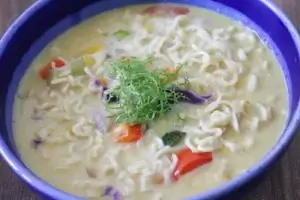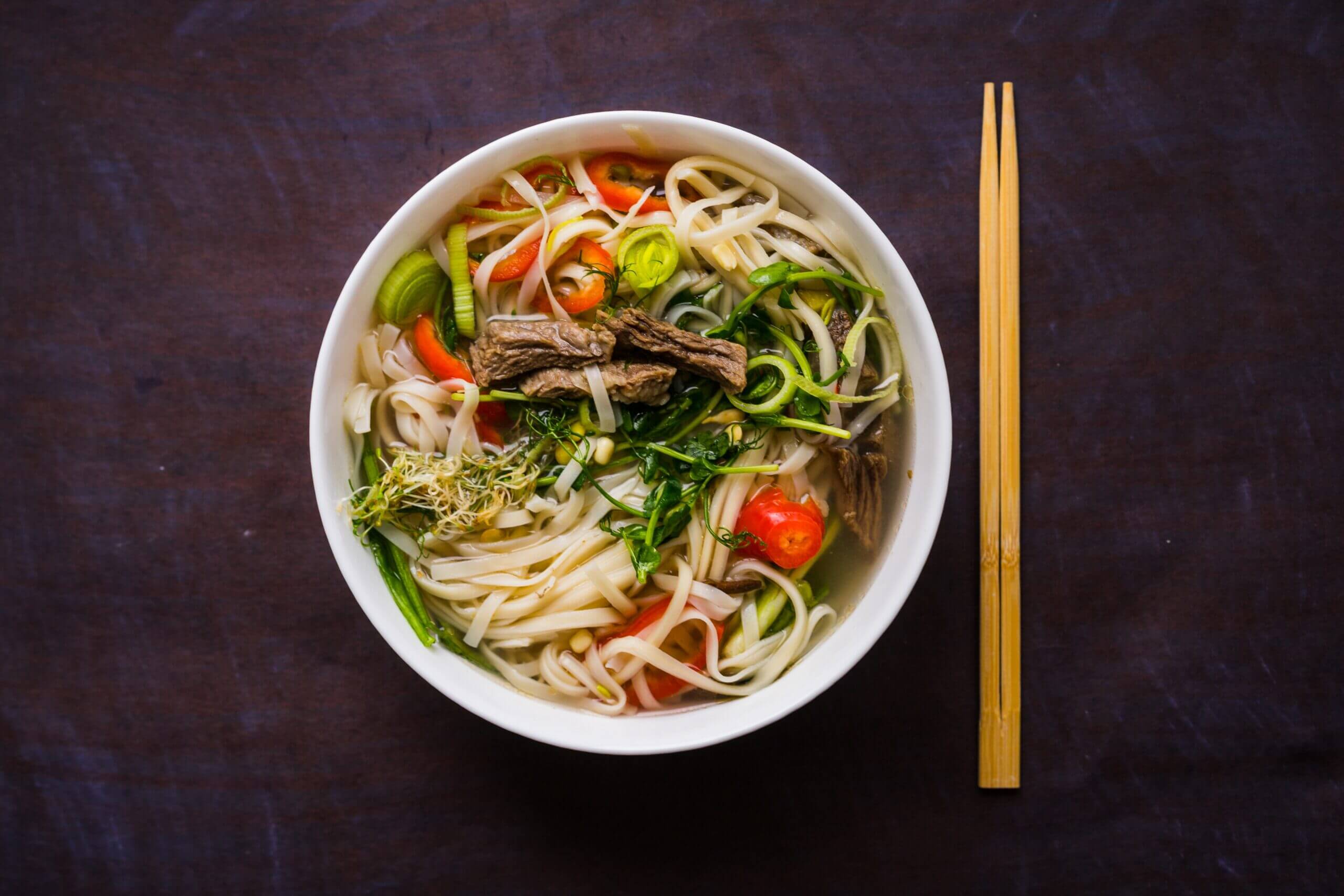How to Cook Rice Noodles? Best Easy Ways 2023
With their delicate texture and ability to absorb flavors, rice noodles provide a versatile base for a wide array of dishes. The best and simplest methods for cooking rice noodles will be covered in this extended blog post, ensuring that you produce consistently delicious results each time you enter the kitchen.
Introduction Rice Noodles
Rice noodles have gained worldwide popularity for their lightness, gluten-free nature, and compatibility with various dietary preferences. From classic stir-fries to soul-warming soups and vibrant salads, rice noodles offer endless opportunities to explore different flavors, textures, and culinary traditions. By mastering the art of cooking rice noodles, you open up a world of gastronomic possibilities, allowing you to recreate beloved Asian dishes or experiment with your unique creations.
We will explore the various methods of preparing rice noodles, including soaking and boiling techniques, and provide detailed instructions on achieving the ideal texture for different recipes.
You will discover the joys of stir-frying rice noodles, where the sizzling heat of a wok or skillet infuses the noodles with intense flavors and creates enticing aromas. We will walk you through every step of the procedure, from choosing the ideal protein and vegetables to making a delicious sauce that perfectly coats the noodles.
Additionally, we will explore the world of rice noodle soups, such as the famous Vietnamese pho or the aromatic Malaysian laksa. You’ll learn how to craft a flavorful broth, choose the appropriate protein, and combine the noodles with carefully selected toppings to create a heartwarming and satisfying soup experience.
Furthermore, we will delve into the realm of cold rice noodle salads, a perfect choice for hot summer days or light and refreshing meals. You’ll discover how to prepare a tangy dressing that perfectly complements the rice noodles and pairs wonderfully with fresh vegetables and herbs. We will guide you in selecting the ideal protein options and suggest tantalizing toppings to elevate your salad.
You will develop the confidence and abilities necessary to prepare rice noodle dishes of restaurant quality in the comfort of your kitchen by adhering to our professional advice and comprehensive instructions. So, let’s embark on this culinary adventure together and unlock the incredible potential of cooking with rice noodles. Get ready to impress your family and friends with your newfound expertise in preparing these delectable and versatile noodles.
Choosing the Right Rice Noodles
Vermicelli
- For dishes like spring rolls, salads, and stir-fries, vermicelli noodles’ thin and delicate texture is ideal.
Pad Thai Noodles
- These wider noodles are commonly used in the popular Thai dish, Pad Thai. They have a slightly chewy texture and absorb flavors well.
Rice Stick Noodles
- Rice stick noodles, also known as banh pho, are flat and wide noodles commonly used in soups like pho or stir-fried dishes.
Consider the recipe you’re preparing and the desired texture and thickness of the noodles when choosing the right type.
Preparing Rice Noodles
Soaking Method
Soaking is suitable for thinner rice noodles. Soak the noodles until they are soft. To halt the cooking process, drain and thoroughly rinse with cold water.
Boiling Method
Thicker rice noodles, like rice stick noodles, may require boiling instead of soaking.
Stir-Frying Rice Noodles
Rice noodles can be prepared quickly and flavorfully by stir-frying. An extended description of the procedure is given below:
- Choose an oil with a high smoke point, such as vegetable or peanut oil.
- Add your chosen protein and cook it until it is almost done, such as thinly sliced chicken, shrimp, or tofu. Ensure the protein is cooked separately from the vegetables to prevent overcrowding the pan.
- Add the soaked or boiled rice noodles to the pan and toss them with the ingredients. Use tongs or chopsticks to gently separate and distribute the noodles.
- Toss everything together to ensure the noodles are well-coated with the sauce and heated through.
- Garnish the dish with chopped herbs like cilantro or green onions for added freshness and flavor. Serve the stir-fried rice noodles hot.
Making Rice Noodle Soups
Rice noodle soups are comforting and satisfying. An extended description of the procedure is given below:
- Make your preferred flavorful broth first, such as beef, chicken, or vegetable broth.
- Add thinly sliced or bite-sized pieces of protein, like beef, chicken, or shrimp, to the boiling broth. Cook the protein until it’s done and tender.
- Soak the rice noodles briefly in hot water until they soften, then drain them. This step helps to separate the noodles and prevent them from clumping together.
- Place the softened in serving bowls, distributing them evenly.
- Ladle the hot broth and protein over ensuring they are fully submerged. The hot broth will continue to cook the noodles slightly.
- Serve the rice noodle soup immediately while it’s hot, allowing everyone to customize their bowls with additional condiments like hoisin sauce or Sriracha.

Cold Rice Noodle Salads
Cold rice noodle salads are refreshing and perfect for warm weather. Here’s an expanded explanation of the method:
- Begin by cooking the rice noodles according to the package instructions. Drain the noodles and rinse them with cold water to remove excess starch and cool them down.
- In a bowl, prepare a dressing using ingredients like lime juice, fish sauce, soy sauce, honey, minced garlic, and chili flakes for some heat.
- Consider adding your choice of protein, such as grilled chicken or shrimp, for added substance and flavor. Before including it in the salad, the protein should be cooked separately and given time to cool.
- Allow the flavors to meld for a few minutes before serving the cold rice noodle salad. Garnish with additional herbs, crushed peanuts, or sesame seeds for extra texture and taste.
Conclusion
Learning the technique for making opens up a world of delicious and diverse culinary options. Whether you opt for the quick and vibrant stir-frying method, where the noodles absorb the rich flavors of the accompanying ingredients, or venture into the realm of soul-soothing rice noodle soups, where the noodles mingle with aromatic broths and tender proteins, each bite will transport you to the vibrant streets of Asia.
And let’s not forget about the refreshing and invigorating cold rice noodle salads, where the cool, chewy noodles intermingle with crisp vegetables, fragrant herbs, and tantalizing dressings. These salads are a perfect choice for light, wholesome meals or as a side dish to complement other culinary creations.
You can quickly become an expert at making by carefully following the step-by-step instructions provided in this extended blog. With practice, you will develop an intuitive sense for perfecting the texture of the noodles, ensuring they are tender yet firm and never mushy.
Do not be afraid to experiment with different ingredients, sauces, and seasonings as you gain experience preparing. Add your twist to traditional recipes or create entirely new dishes that showcase your culinary prowess and unique flavor preferences.
So gather your ingredients, heat your wok, and prepare for an enjoyable culinary adventure. Making involves more than just providing nutrition; it also involves embracing the tastes, customs, and joy that food brings to our lives. Take pleasure in the procedure, savor the end product, and spread the love of to your loved ones. Bon appétit!







